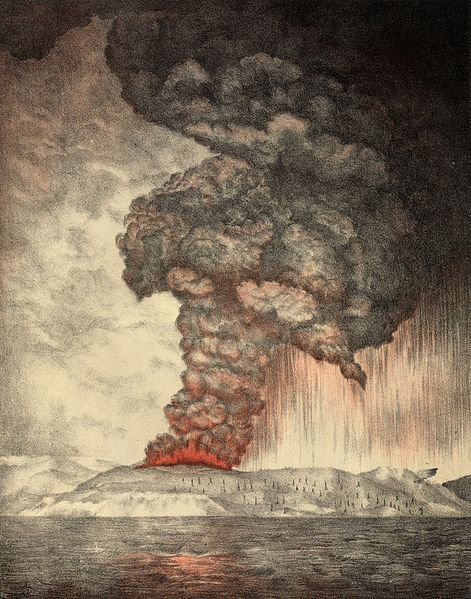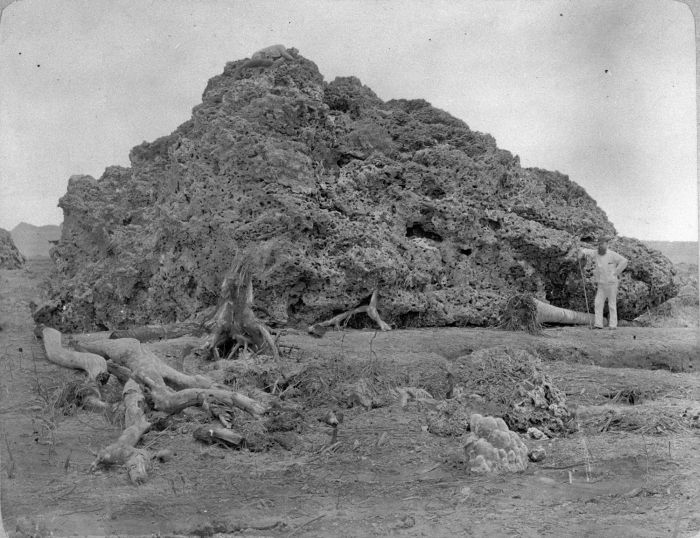On this day: Krakatau’s massive eruption

ON 27 AUGUST 1883, one of the most violent eruptions in history tore apart the Indonesian volcano of Krakatoa – known locally as Krakatau – destroying its underlying island and clouding the world in ash.
The first signs of activity at Krakatoa occurred in late May of the same year, when the volcano erupted unexpectedly, sending a plume of smoke 10km into the atmosphere. By early August vents were regularly spewing lava and gas from the side of the volcano.

An 1888 lithograph of the 1883 eruption of Krakatoa. (Image: Lithograph: Parker & Coward, Britain)
On the morning of 27 August, four massive eruptions occurred in quick succession, the last of these tearing open fissures in Krakatoa’s walls, which geochemistry Professor Simon Turner from Macquarie University says allowed sea water to pour into the magma chamber, precipitating the final explosion.
Its force was four times more powerful than the largest bomb ever detonated, with resulting concussive air waves that travelled seven times around the globe.
The eruption and fall-out
The eruption, which was heard some 3500km away in Perth, generated tsunamis that swept across the region, resulting in the deaths of around 36,000 people and wiping out whole settlements. In a macabre twist, there were recorded incidences of human skeletons washing up on the east coast of Africa up to a year afterwards, having been carried across the Indian Ocean on rafts of volcanic pumice.
Average global temperatures fell by as much as 1.2ºC in Krakatoa’s aftermath, and, says Dr Kelsie Dadd from Macquarie University, sunlight reflected from suspended dust particles resulted in spectacular sunsets throughout the world for months afterwards.

Coral block thown onto the shore of Jawa after the Krakatau eruption of 1883. (Image: Woodbury & Page / Collectie Stichting Nationaal Museum van Wereldculturen)
Researchers have speculated that the blood-red sunset in Edvard Munch’s famous 1893 painting The Scream may in fact be a depiction of the sky over Norway after the eruption.
Further volcanic eruptions on Krakatoa since 1883 have led to the creation of a new volcanic island, known as Anak Krakatau (“Child of Krakatoa”). The island, which Simon Turner says “is geologically active and likely to erupt in the future”, grows at the rate of 13cm each week.
READ MORE:
- VIDEO: Australia’s largest volcano erupts
- Shockwave from PNG volcano uncovered
- 33 earthquakes in 30 days: Australia’s shakiest town




